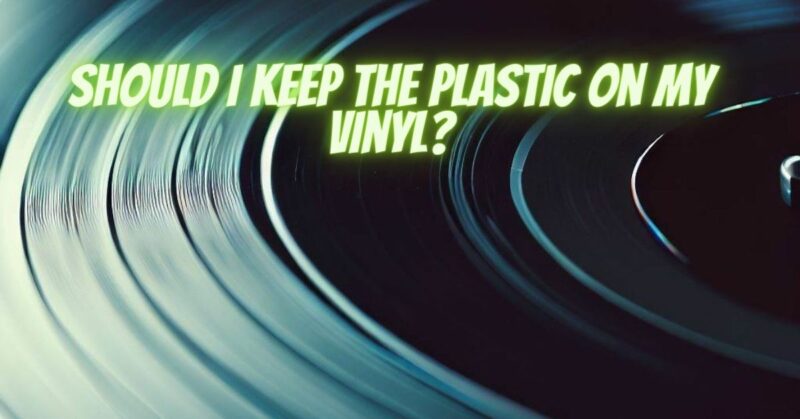Vinyl records, cherished for their unique sound and tactile charm, deserve careful consideration when it comes to preservation. One common question that arises among collectors is whether to keep the plastic wrap on vinyl records or to remove it. In this article, we’ll explore the reasons for and against keeping the plastic wrap, the potential impact on the record’s condition, and how to strike a balance between protection and usability.
The Case for Keeping the Plastic Wrap
Pros:
- Initial Protection: The plastic wrap provides initial protection against dust, moisture, and handling during shipping and storage.
- Cover Art Preservation: The plastic wrap keeps the record cover’s artwork and jacket in pristine condition, preventing wear, creases, and scuffs.
- Collectible Value: Some collectors prefer to keep the original plastic wrap intact to preserve the collectible value of the record.
Cons:
- Moisture Trapping: If moisture is trapped between the plastic and the cover, it can lead to mold growth and damage over time.
- Vinyl Off-Gassing: New vinyl records may release gases that can be trapped by the plastic wrap, potentially affecting the record’s quality.
- Storage Limitations: The plastic wrap may prevent proper airflow and contribute to the accumulation of moisture and static electricity over time.
The Argument for Removing the Plastic Wrap
Pros:
- Airing Out: Removing the plastic wrap allows the record and cover to “breathe,” minimizing the risk of moisture buildup and potential off-gassing.
- Reduced Mold Risk: Without the plastic wrap, the cover can dry out more effectively, reducing the risk of mold growth.
- Static Reduction: Removing the plastic wrap can help minimize static buildup, which can attract dust and affect playback.
Cons:
- Cover Wear: Removing the plastic wrap exposes the cover to potential wear and damage from handling, spills, and environmental factors.
- Collectible Impact: Some collectors value the original packaging, including the plastic wrap, as part of the record’s authenticity and potential future value.
Finding the Middle Ground
To strike a balance between protection and usability, consider the following approach:
- Initial Inspection: When you first acquire a vinyl record, carefully inspect the cover for any visible defects or damage. If the plastic wrap is tightly sealed and shows no signs of moisture or damage, you might choose to keep it on temporarily.
- Airing Out: After a period of initial inspection, consider removing the plastic wrap to allow the record and cover to “breathe.” Ensure the record is stored in a clean, controlled environment.
- Replacement Outer Sleeves: If you decide to remove the plastic wrap, consider placing the record in a high-quality outer sleeve to protect the cover from wear, dust, and moisture.
Deciding whether to keep the plastic wrap on your vinyl records involves a balance between protecting the cover’s condition and ensuring the record’s long-term quality. While the plastic wrap offers initial protection, factors like moisture trapping and off-gassing may outweigh its benefits. By thoughtfully evaluating the condition of each record’s cover, considering its collectible value, and taking steps to ensure proper storage and protection, you can make an informed decision that suits your preferences and maintains the integrity of your vinyl collection.


